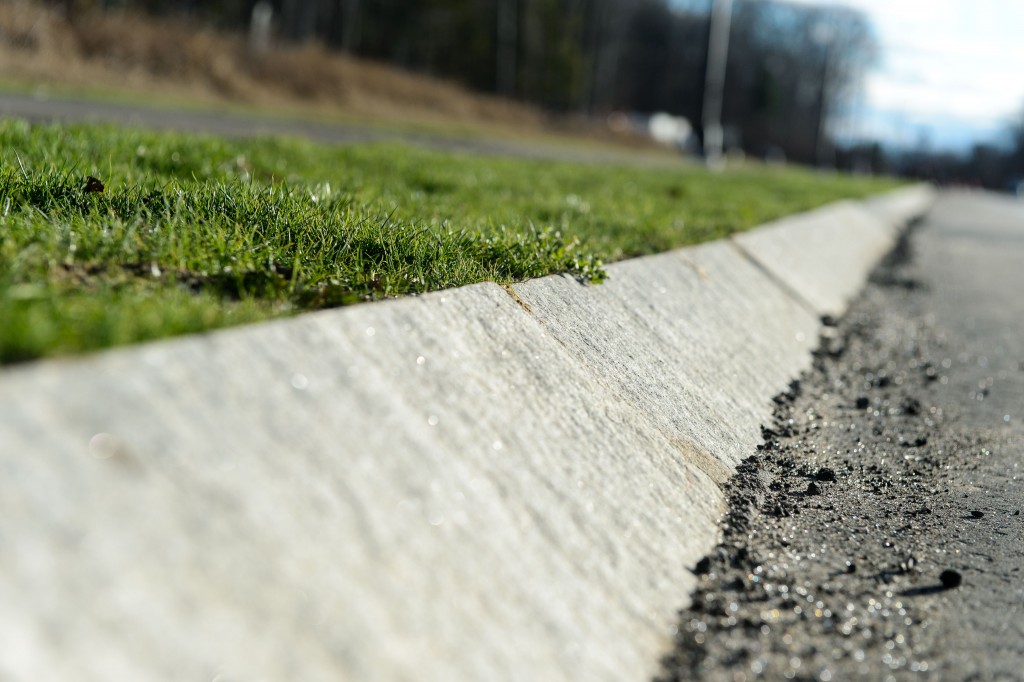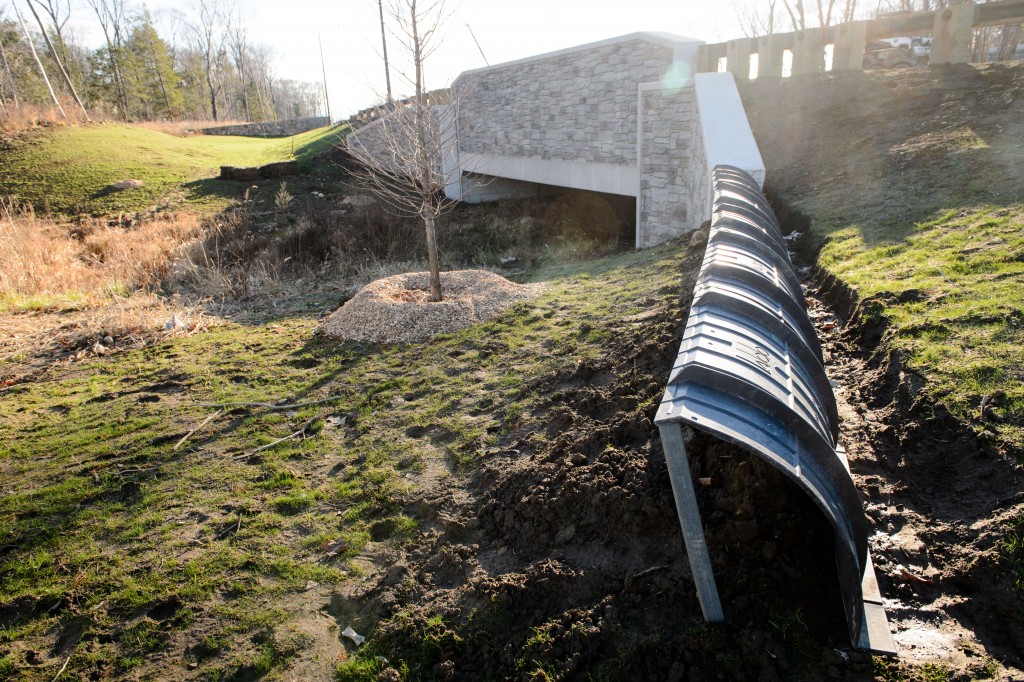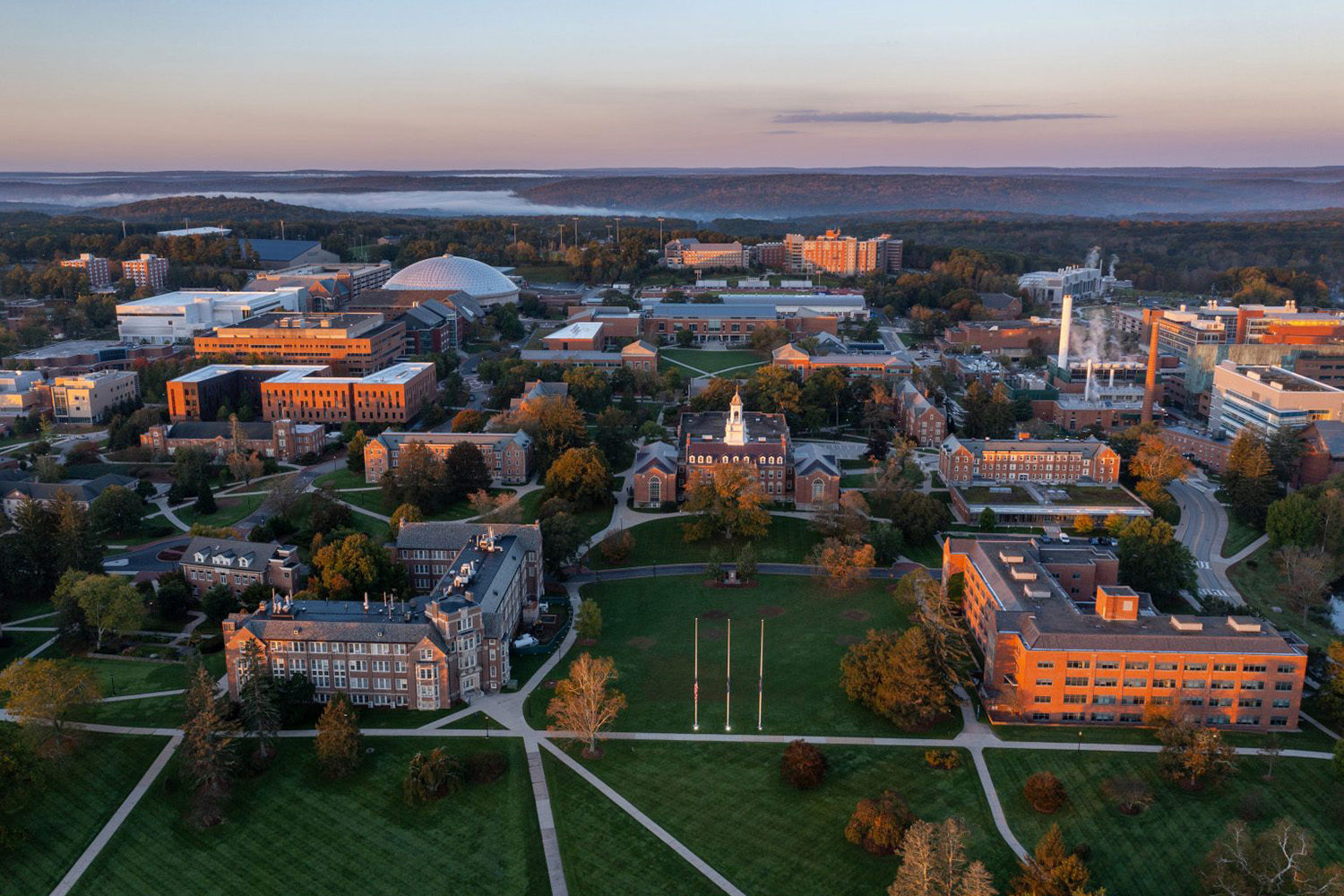This post was updated on Jan. 12 to reflect the new name for the road: Discovery Drive.
It’s safety first for wildlife living in the area around the new road that links the Storrs campus to Route 44.
From salamanders and frogs to white-tailed deer and everything in between, wildlife species will be able to cross from one side of Discovery Drive to the other in safety, thanks to UConn environmental engineers, planners, and ecologists who have helped provide for more than vehicular traffic during the road’s construction.
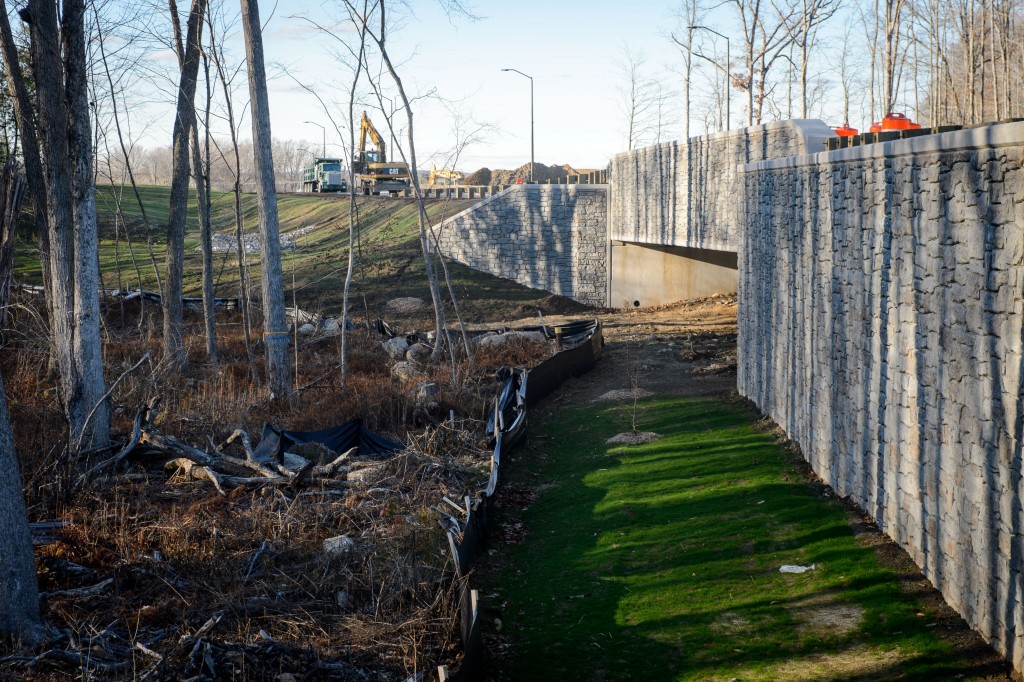
Early in the planning stage, eight different designs were studied in an effort to find a path that would minimize destruction of valuable wetlands. The result is a state-of-the-art roadway that includes LED lighting, special curbing, a reduced salt zone, and a network of bridges and amphibian barriers that are ecologically sound and beneficial to the wildlife that inhabit the area.
The area is surrounded by an additional 101 acres of conservation land, providing a natural barrier that will protect both the wetland network and the woodlands. Combined with the existing 64-acre conservation land known as the Hillside Environmental Educational Park, the result is a total of 165 wildlife-friendly acres.
“Before construction even started, we did a background population check on the amphibians living in the wetlands, including salamanders, newts, frogs, and toads,” says Paul Ferri, environmental compliance analyst in UConn’s Office of Environmental Policy. “And every spring during construction we have checked on the vernal pools – the temporary water homes where many salamanders and frogs like to breed – to make sure we haven’t adversely affected the populations.”
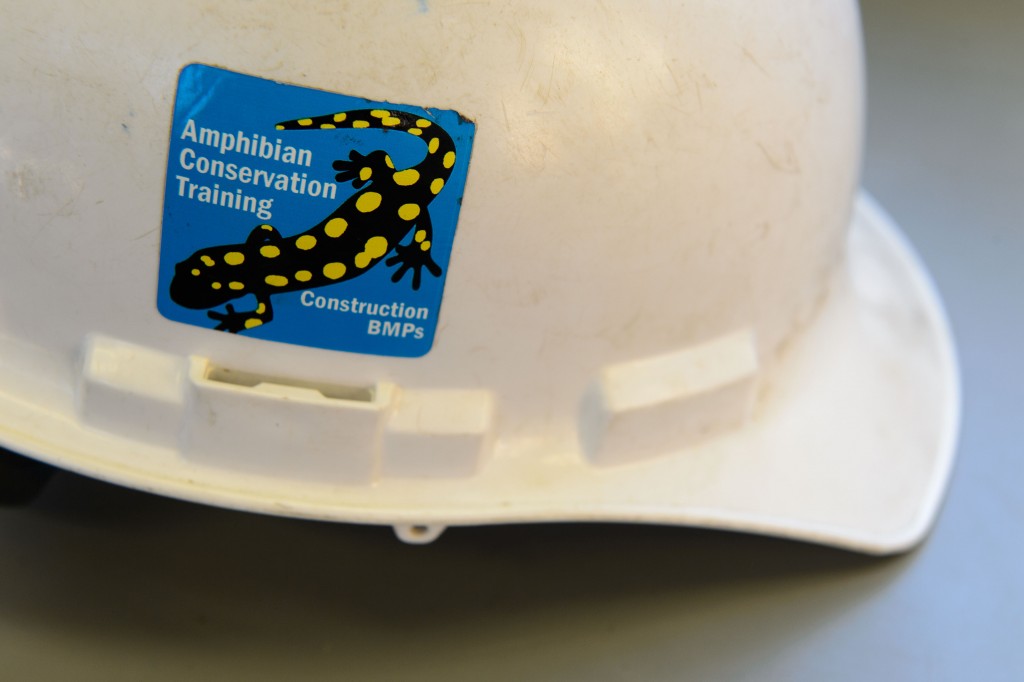
He says all the workers involved in the project were given special training in what to do if they came across a stranded amphibian during construction. The fact that this training included anticipating the direction in which an errant salamander might want to travel caused more than a few raised eyebrows among the road crew.
“At first the construction workers were a bit skeptical,” Ferri says, ” and they weren’t thrilled about having to add wildlife awareness to their ‘things to do’ list. But one day we were able to show them a large group of tadpoles swimming in one of the vernal pools, and they really got on board the conservation effort. In fact, one of the contractors had stickers made up for their hard hats boasting that the workers had received ‘Amphibian Conservation Training.’”
During the planning phase, the road’s designers looked at the paths the amphibians use to travel to their breeding grounds in the wetlands. Ultimately, three different bridges were constructed, including two that are big enough for larger animals – such as the white-tailed deer that inhabit the region – to pass beneath them.
In addition to the bridges, which have extended wing walls to guide the amphibians under the roadway, there are additional barriers made of plastic that act as funnels to encourage them to head in the right direction – under instead of over the road.
Other precautions include the use of Cape Cod curbing, that is angled so that if an amphibian or other small animal does get on the roadway it can climb up and over the curb. And because amphibians use moonlight as their cue for moving about, special LED light fixtures that can be directed at the roadway and away from the wetlands were installed so the artificial light doesn’t shine on migratory pathways.
“Drivers will notice that the road is ‘S’ shaped,” says Ferri, “and that path was chosen because it passes through the least amount of wetland area. Construction ultimately impacted about a third of an acre of wetland, but we were able to create an additional two full acres of wetland, and that’s a seven-fold increase.”
A reduced salt zone is also part of the design. Winter de-icing operations will follow the practice of reducing the amount of salt applied to the roadway when it passes through environmentally sensitive areas.
But the work is not over. The federal government requires a five-year monitoring period after wetlands have been disturbed and areas have been restored or enhanced – called wetland mitigation – to ensure that native species are at healthy population levels. Connecticut’s Department of Energy and Environmental Protection also mandates five years of regular checks.
In addition to assuring that wetland habitat is working for animals, this also assures that native plant species will become established, or reestablished, in the area. Not including shrubs and other small plantings, an additional 985 trees are being planted along the roadway, an effort that will be completed during the landscaping/beautification phase of the project in the Spring of 2016.
Says Ferri, “We know some people get upset if they see construction in an area that has been pretty much undisturbed. But I think if they truly understand the amount of work we went through to design the road to be as environmentally sensitive as possible, they will feel much better about the project.”

